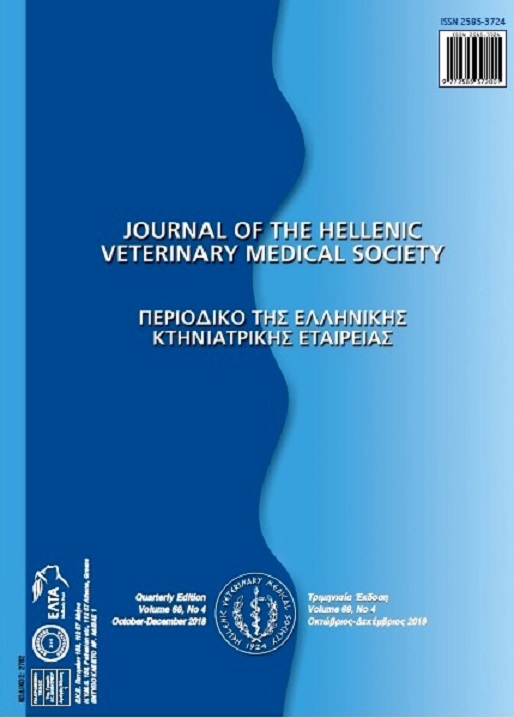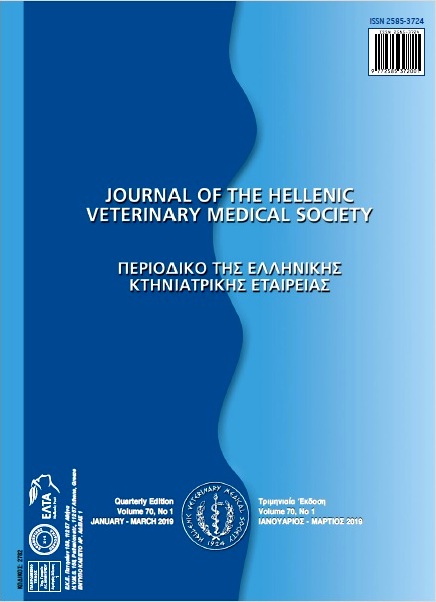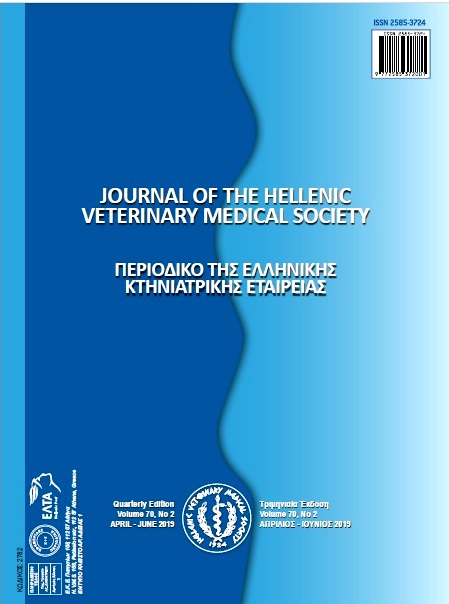Thymoma associated exfoliative dermatitis in a rabbit with hepatic cirrhosis

Abstract
A 6.5-year-old, male, non-castrated pet rabbit was presented with generalized exfoliative dermatitis, depression and anorexia. Skin laboratory examinations were negative for ectoparasites, bacteria and fungi whereas thoracic radiography revealed a large mediastinal mass. Complete blood and biochemical examinations did not show anything abnormal. Thymoma was suspected and therapeutic options were discussed but the owner declined. Supportive and symptomatic therapy was of no avail and severe deterioration of systemic symptoms necessitated euthanasia. Necropsy revealed a whitish-gray mass on the anterior and lower part of the mediastinum and pale voluminous liver. Histopathology confirmed the presence of thymoma and the hypothesis of thymoma-associated exfoliative dermatitis along with hepatic cirrhosis.
Article Details
- How to Cite
-
Komnenou, A., Androulakis-Kess, J., Farmaki, R., Psalla, D., & Psychas, V. (2019). Thymoma associated exfoliative dermatitis in a rabbit with hepatic cirrhosis. Journal of the Hellenic Veterinary Medical Society, 69(4), 1309–1316. https://doi.org/10.12681/jhvms.19622
- Issue
- Vol. 69 No. 4 (2018)
- Section
- Case Report

This work is licensed under a Creative Commons Attribution-NonCommercial 4.0 International License.
Authors who publish with this journal agree to the following terms:
· Authors retain copyright and grant the journal right of first publication with the work simultaneously licensed under a Creative Commons Attribution Non-Commercial License that allows others to share the work with an acknowledgement of the work's authorship and initial publication in this journal.
· Authors are able to enter into separate, additional contractual arrangements for the non-exclusive distribution of the journal's published version of the work (e.g. post it to an institutional repository or publish it in a book), with an acknowledgement of its initial publication in this journal.
· Authors are permitted and encouraged to post their work online (preferably in institutional repositories or on their website) prior to and during the submission process, as it can lead to productive exchanges, as well as earlier and greater citation of published work.




